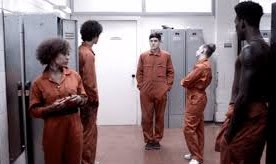One way
to make sure you’ve got coverage is to film a master shot: a long shot or very
long shot of all the action. You should also shoot cutaways – details of other
parts of the setting. You can then cut back to these shots to cover any
problems or gaps when you edit.
 If you’ve only got one camera and you’re shooting a drama
scene, set up the camera for a master shot in a position that will cover the
whole action, then film the actors doing the whole scene, before you film the
mid shots and closeups.
If you’ve only got one camera and you’re shooting a drama
scene, set up the camera for a master shot in a position that will cover the
whole action, then film the actors doing the whole scene, before you film the
mid shots and closeups.
If it’s a live event or performance, you’ll need a second
camera for this. Set it up on a tripod where it can cover the whole action,
start it and leave it running. Remember that SLR cameras can’t record very long
clips, so if the event lasts longer than the maximum clip length you’ll need to
use a camcorder instead.
If you’re cutting between closeups of two actors talking to
each other, film the whole scene with the camera on actor 1, then move the
camera round to face actor 2 and film the whole scene again. You can then cut
between these two shots, and the cutaways and master shots, when you edit. You
can use exactly the same technique for interviews. Remember to follow the rules
of continuity so that the shots will work together
With actors or presenters, you’ll need to rehearse the scene
a couple of times before you film it. Get them to run through the scene a
couple of times, making any changes to their positions and performances. Then
start to work out where to put the camera for each shot. This process is called
blocking.
NEXT PAGE





No comments:
Post a Comment